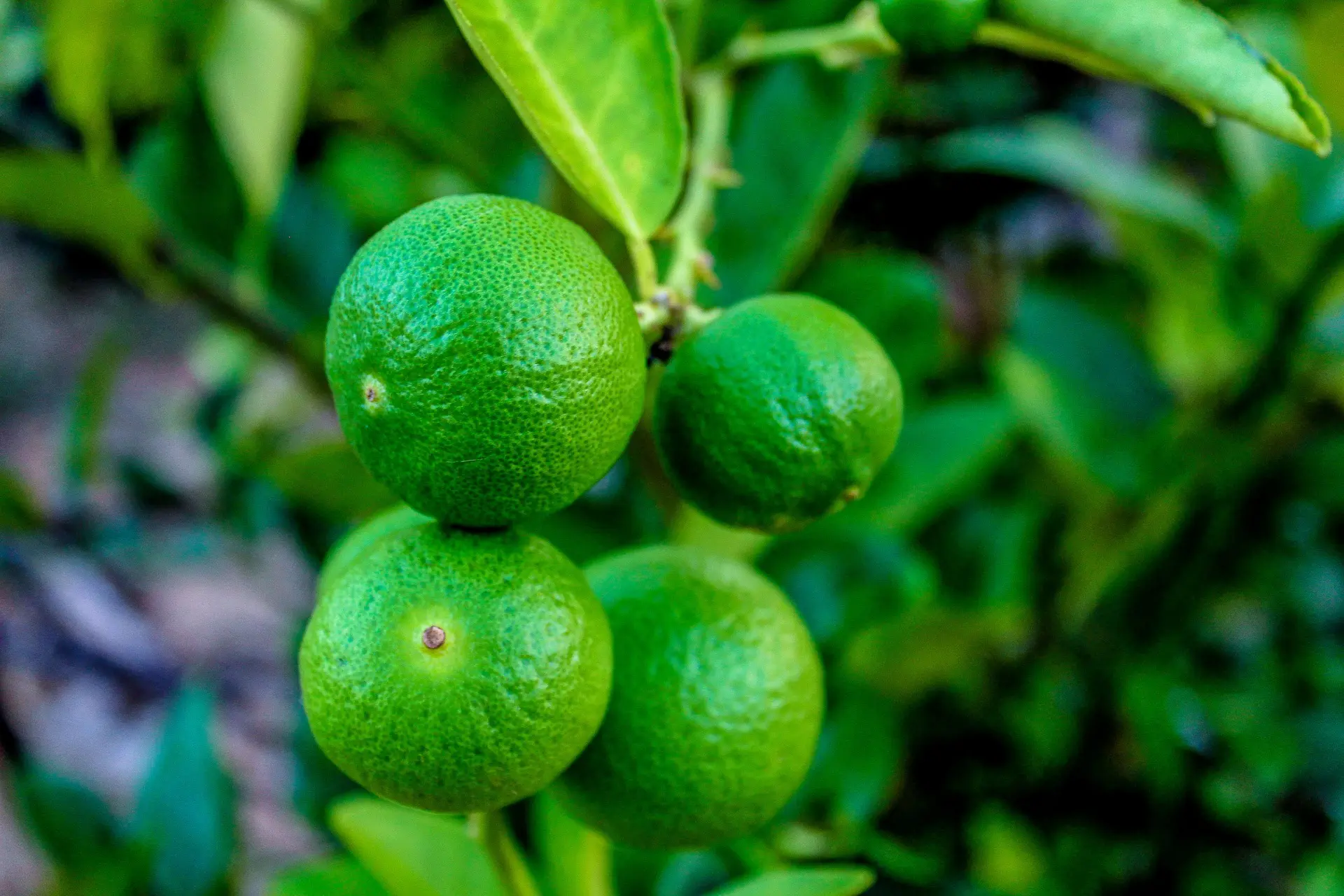This post contains affiliate links. If you buy something from one of our links we may earn a commission. Thanks
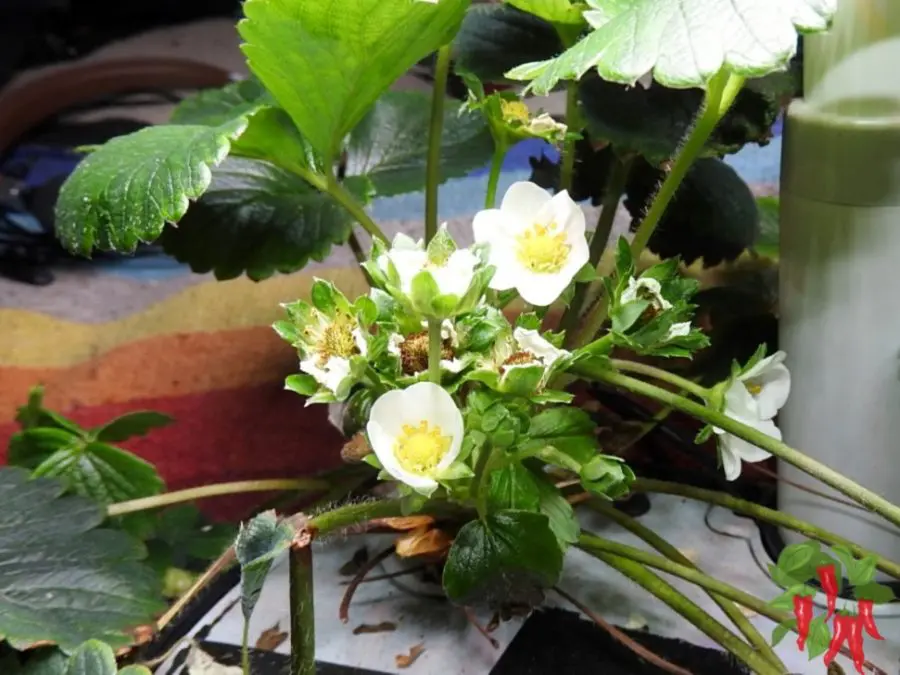 Can you grow strawberries indoors? this is a frequently asked question that many indoor gardeners may have. If you’re wondering if you can grow strawberries indoors the answer is a resounding yes!
Can you grow strawberries indoors? this is a frequently asked question that many indoor gardeners may have. If you’re wondering if you can grow strawberries indoors the answer is a resounding yes!
You can grow strawberries indoors using the right tools and techniques. You’ll need a well-draining soil, consistent moisture, and at least 6 hours of light per day, ideally from an LED grow light. Temperature should be between 60-70°F. Strawberry crowns are recommended for quicker fruiting.
Can you grow strawberries indoors?
With the right tools and techniques, it’s possible to enjoy fresh, homegrown strawberries year-round, regardless of the weather outside.
In this post, we will delve into the world of indoor strawberry cultivation, exploring everything from the use of strawberry crowns and LED grow lights to specialized gardening systems such as AeroGardens and strawberry towers.
Whether you’re a seasoned gardener or new to indoor growing, you can skip buying tasteless berries at the grocery store and grow your own sweet fruit.
We have all the information you need to start your own indoor strawberry patch.
At this time I have been growing strawberries indoors in an AeroGarden and a DIY strawberry tower and I want to show you how you can do it too.
The Benefits Of Growing Strawberries Indoors
Growing strawberries indoors has many benefits, including the ability to enjoy fresh, homegrown berries year-round, regardless of the weather outside or the growing season.
Indoor strawberry cultivation also allows you to control the growing environment, which can result in a larger yield and sweeter berries.
Additionally, indoor strawberry growing doesn’t use a lot of space so it is a great option for those with limited outdoor gardening space.
How Can You Grow Strawberries Indoors?
You can grow strawberries indoors and we are going to tell you how.
Strawberries are actually one of the easiest fruits to grow indoors.
Strawberries are perennial plants and are easy to propagate by rooting the runners they produce.
With the right tools and techniques, indoor strawberry cultivation is a viable option for many gardeners.
Strawberries are a relatively easy crop to grow indoors and can be grown in a variety of different systems, including Aerogardens, strawberry towers, and in traditional pots.
You can also grow new plants indoors from the runners during the winter for an outdoor garden if you have one.
Conditions needed for successful indoor strawberry growth
To successfully grow strawberries indoors, you will need to provide your new plants with the right amount of light, water, and nutrients.
Strawberries require at least 6 hours of sunlight per day to produce ripe strawberries so an LED grow light will be needed if you don’t have a sunny window.
Additionally, strawberries need well-draining soil and consistent moisture to thrive.
The temperature should be between 60-70 degrees Fahrenheit for optimal growth.
Proper ventilation and air circulation are also important to prevent mold and mildew growth.
Proper pruning, training, and fertilizing are also needed for good growth.
Strawberry Crowns vs. Seeds
When it comes to growing strawberries indoors, there are two main options: starting from crowns or starting from strawberry seeds.
Growing from seeds requires more time and patience, as the seeds can take several weeks to germinate and the resulting plants will take 3-4 years to produce fruit.
On the other hand, starting with strawberry crowns allows you to bypass the germination process and get a head start on fruit production.
There are many strawberry varieties to choose from. You want to avoid June-bearing strawberries for indoor plants because this type of strawberry will only bear one crop.
The best type of indoor strawberries is day-neutral or ever-bearing strawberries. These are varieties that produce a continuous crop.
We will provide a list of suitable varieties a bit later in this post.
Your strawberry plants will be bare-root plants. If you want to grow alpine strawberries you will probably need to use seeds because crowns are not readily available.
Why using strawberry crowns is a better option for indoor growing
One of the main reasons to use strawberry crowns instead of seeds when growing indoors is the speed at which you can start to harvest fruit.
Strawberry crowns are mature plants that are ready to fruit within a few months of planting, whereas plants grown from seed can take years to produce fruit.
Additionally, using strawberry crowns eliminates the risk of disease that can come with starting plants from seed.
Crowns are also more resistant to pests and diseases than seedlings and are more adaptable to indoor conditions.
Finally, using crowns allows you to select a variety that is well suited to indoor growing, ensuring a better success rate.
Seed-raised strawberries can vary greatly in quality.
Recommended Strawberry Varieties
As we mentioned previously you don’t want to use June-bearing strawberries that only produce a single crop. You want to choose day-neutral or ever-bearing varieties for indoor growing.
Here is a list from the University of Minnesota Extension along with growing tips:
• Albion
• Evie-II
• Monterey
• Portola
• San Andreas
• Seascape
Using An LED Grow Light
Light is essential for the growth and development of strawberry plants, and it is particularly important when growing strawberries indoors.
Strawberries require at least 6 hours of direct sunlight per day to produce fruit, so an LED grow light is necessary.
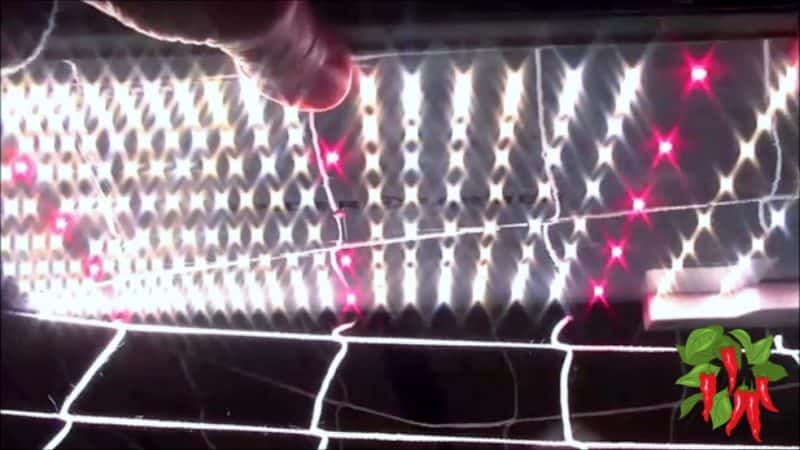
I use a Spider Farmer SF2000 and it can cover about a 4 by 6-foot area for my indoor garden. It works really well and is a good value for the money.
Read my full Spider Farmer SF2000 review.
Even if you have a sunny windowsill it won’t be able to provide enough light during the winter months.
This is the time homegrown strawberries will be most appreciated. So using supplemental lighting is the best way to harvest strawberries year-round.
The light provided by an LED grow light will mimic natural sunlight and provide the plants with the energy they need for photosynthesis.
For a smaller area here is another LED grow light to consider. 
The Benefits Of Using An LED Grow Light
LED grow lights have many benefits when it comes to indoor strawberry cultivation.
They are energy-efficient, long-lasting, and produce minimal heat, making them a great choice for indoor gardening.
LED grow lights also provide a full spectrum of light, which is important for healthy plant growth and development.
Additionally, LED grow lights can be adjusted to provide the right amount of light for different stages of growth, from germination to fruiting.
Tips for selecting and using an LED grow light for indoor strawberry growing
When selecting an LED grow light for indoor strawberry cultivation, it’s important to choose one with a high-quality build and a full spectrum of light.
Look for lights with a high PAR (Photosynthetically Active Radiation) rating, which measures the amount of light that plants can use for photosynthesis.
How Many Watts Do You Need?
Don’t be fooled by the wattage the manufacturer uses. The true wattage is measured at the wall.
Manufacturers use inflated numbers by adding the wattage of all the chips together but this is misleading because they don’t run at full power.
For a 2×4 foot area, you want 200-250 watts measured at the wall. You can cover a larger area. Not all plants need to be directly under the light.
Lower light plants like herbs or lettuce can be placed on the edges of the light footprint. My grow light provides maximum light under a 2×4 area but I use it to cover a 3×5 area.
When using an LED grow light, it’s important to hang the light at the appropriate height above the plants to avoid burning or under-lighting them.
It’s also important to have a timer or a controller to adjust the light cycle for the plant’s needs.
Growing Strawberries in an Aerogarden
What is an AeroGarden?
An AeroGarden is a type of indoor gardening system that uses hydroponic technology to grow plants indoors.
It provides plants with the ideal growing conditions, including light, water, and nutrients, in a compact and easy-to-use design.
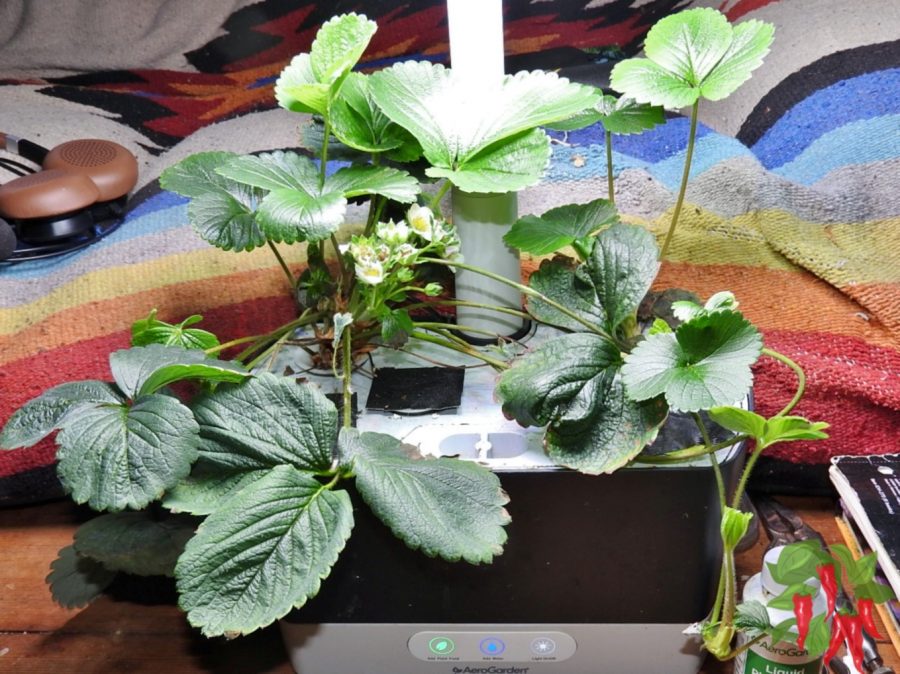
The benefits of using an Aerogarden for indoor strawberry growing
Using an Aerogarden for indoor strawberry growing has many benefits.
The system provides plants with the perfect balance of light, water, and nutrients, which can lead to a larger yield and sweeter berries.
Additionally, the compact design of an Aerogarden saves space and is a great option for those with limited indoor gardening space.
AeroGardens also has a built-in light system which means you don’t have to purchase a separate LED light.
Tips for selecting and using an Aerogarden for indoor strawberry growing
When selecting an Aerogarden for indoor strawberry cultivation, it’s important to choose one that is the right size for your needs and has the appropriate light spectrum for strawberry growth.
I am using an AeroGarden Harvest. It has 6 slots but I am only using two.
The company recommends the AeroGarden Bounty with 9 spots but unless you are growing from seed you won’t be able to use them all.  Strawberries spread and produce runners and will soon start to overgrow an AeroGarden so you will have runners everywhere.
Strawberries spread and produce runners and will soon start to overgrow an AeroGarden so you will have runners everywhere.
You can remove some and keep the ones hanging down getting enough light.
It’s also important to choose the right variety of strawberry for the AeroGarden, as some varieties may not be well-suited to hydroponic growing.
I am using day-neutral varieties of strawberries. These varieties will produce fruit continually but after a year of fruiting, you will want to replace them with new plants.
It is very easy to root runners and create replacements by putting them in a small pot and waiting for them to root before separating them from the mother plant.
I was able to start a second plant by pinning it on top of a root riot in one of my slots. After a few weeks, it was rooted and growing well.
Tips To Grow Strawberries In An Aerogarden
To grow strawberry crowns you need to make a few changes, Most important is the crown needs to be totally above water or it will rot and die.
I used the baskets but not the sponges. You may need to trim some roots for it to fit.
If there is space around the crown fill it in with pieces of sponge to hold it in place. You don’t want any light to get into the reservoir.
Step-by-step guide for planting and growing strawberries in an Aerogarden
1. Select an Aerogarden and strawberry variety that is well-suited to hydroponic growing.
You can use any size AeroGarden but you won’t fill it full of plants. 2 or 3 plants will be enough.
Don’t buy strawberry seed pods they take 3 years to bear fruit. Instead, buy day-neutral strawberry crowns.
2. Follow the manufacturer’s instructions for planting and setting up the Aerogarden.
The AeroGarden comes with an easy-to-follow instructions guide. Follow their directions on setting up the light and adding fertilizer.
3. Add the appropriate amount of water and nutrients as per the instruction manual.
I use one cap full of their nutrients every other time I add water. You need to monitor the water level and a flashing light will alert you to add more water or fertilizer.
4. Place the Aerogarden in a location with access to natural light or use the built-in light system.
The AeroGarden is small enough to place just about anywhere from a windowsill, shelf, or kitchen counter.
Because of its built-in LED light, you don’t really need natural light but it won’t hurt if it gets a mix of LED and natural light.
5. Keep an eye on the moisture level, Add water and fertilizer as needed.
A flashing light will come on when the water level gets low, another light alerts you when it needs additional nutrients.
This really makes it easy to use even for complete beginners.
6. Prune and train the strawberry plants as they grow.
You can train runners to stay under the light and remove those that are too long.
The light does spread out more if you raise it all the way up.
Strawberry plants will get wide and produce numerous runners. This is why you don’t want more than 2-3 crowns in your AeroGarden.
You will need to train runners back under the light or prune some off. Only remove damaged or dying leaves the healthy leaves are feeding the plant.
If the leaves are touching the light you can lower them by gently squeezing the stem and bending them down.
7. Harvest the strawberries when they are ripe and enjoy the fruits of your labor!
This is the best part that makes everything worthwhile.
Using a Strawberry Tower
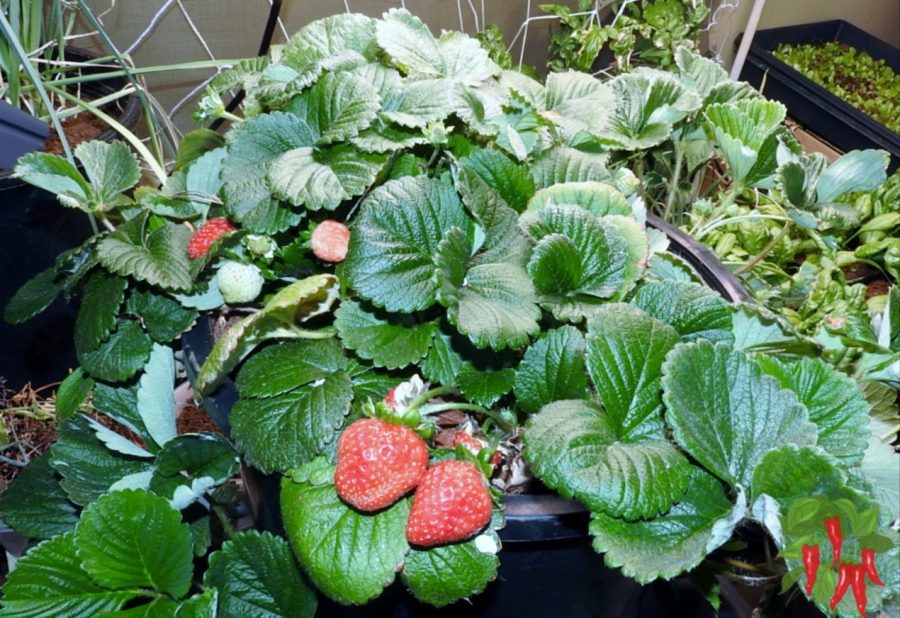
What is a strawberry tower?
A strawberry tower is a vertical gardening system that allows you to grow strawberries in a small space.
It typically consists of a series of pots or planters stacked one on top of the other and connected by a central water and nutrient delivery system.
The benefits of using a strawberry tower for indoor strawberry growing
Using a strawberry tower for indoor growing has many benefits. The vertical design saves space and allows you to grow a large number of strawberries in a small area.
The central water and nutrient delivery system also makes it easy to provide the plants with the right amount of water and nutrients.
Additionally, the tower design allows for good air circulation and sunlight penetration, which can help prevent disease and pests.
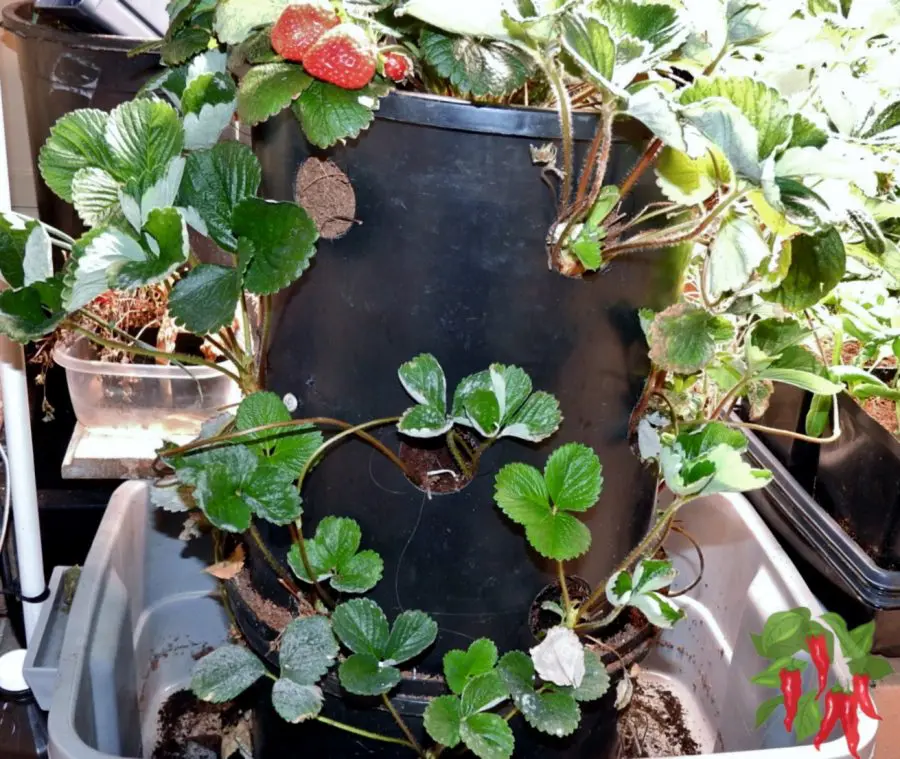
Tips for selecting and using a strawberry tower for indoor strawberry growing
When selecting a strawberry tower for indoor growing, it’s important to choose one that is the right size for your needs and has a sturdy design.
It’s also important to choose the right variety of strawberry for the tower, as some varieties may not be well-suited to vertical growing.
When using a strawberry tower, it’s important to follow the manufacturer’s instructions for planting and care.
This includes giving your plants the right amount of light, water, and nutrients.
Additionally, it’s important to watch for signs of pests and diseases and address them promptly.
DIY Verticle Strawberry Tower
I built this strawberry tower from unused 5-gallon pots but you could do the same with just a 5-gallon bucket.
I added a 1 3/4 inch pipe with holes drilled in it later. It sits in a 10-gallon tote so I bottom water the berries and also topwater because it is 24 inches tall.
The plants on top are Quinalt which I grew in pots and transplanted they are bearing consistently. More info for a DIY strawberry tower.
The ones on the side are Albion. They were younger and some did not take but now they are just about ready to bear fruit.
If you don’t want to build a strawberry tower you can buy a strawberry tower and they are pretty cheap. 
Step-by-Step Guide to Growing Strawberries Indoors
Preparing the growing area
1. Choose a location with access to natural light or a sunny window, or provide artificial light using an LED grow light.
2. If you are using a container, make sure it has drainage holes.
3. Fill the container with well-draining soil or a soilless mix that is appropriate for hydroponic growing.
I use coco coir for my indoor strawberry garden because it gives better results than potting soil or peat moss.
Strawberries require soil with good drainage. You can add compost to increase organic matter. You can also mix an organic fertilizer into the soil.
4. Ensure proper ventilation and air circulation to prevent mold and mildew growth.
Planting the strawberry crowns
1. If you are using strawberry crowns, remove them from their packaging and inspect your indoor strawberry plants for signs of pests or disease.
2. Plant the crowns in the container with the crown above the soil surface making sure to space them appropriately.
If you bury the crowns they will die so keep them at the soil level.
3. Water the crowns well after planting and keep the soil consistently moist. Avoid overwatering as it can cause root rot.
Caring for the strawberry plants
1. Keep the soil consistently moist but not waterlogged.
2. Provide the plants with the appropriate amount of light, water, and nutrients as per the requirement. I leave my LED grow light on a timer and it runs for 12 hours.
3. Prune and train the plants as they grow to promote healthy growth and fruit production.
You can remove excess runners if the plant gets unruly but don’t remove leaves unless they are damaged or dying.
4. Watch for signs of pests and diseases and address them promptly.
It is very important to watch for signs of pests and diseases when growing strawberries indoors, as these can quickly spread and cause damage to the plants.
Insect Pests
Some common pests that can affect strawberries include spider mites, aphids, and whiteflies.
For bugs, you can use organic methods like neem oil or insecticidal soap. Although not recommended you can also use chemical pesticides, but make sure to follow the manufacturer’s instructions and use them in a well-ventilated area.
Diseases
Diseases to look out for include powdery mildew, verticillium wilt, and crown rot. If you notice any signs of pests or diseases, it’s important to address them promptly to prevent further damage to the plants and ensure a healthy crop.
For diseases, you can take preventative measures such as avoiding over-watering, providing proper ventilation and air circulation, and avoiding overcrowding.
Once a disease is identified, you can use specific fungicides like copper fungicides or sulfur fungicides to treat it.
It’s important to use any fungicide according to the product instructions and to remove and destroy any infected plant material to prevent the spread of the disease.
It’s always a good idea to consult with a professional or conduct research to ensure the right treatment method is used.
Harvesting the strawberries
1. Strawberries are typically ready to harvest within a few months of planting.
2. Look for ripe fruits that are plump and brightly colored.
3. Gently twist the berries off the plant to harvest them.
4. Enjoy your delicious, homegrown strawberries!
Growing Strawberries FAQs
Growing strawberries indoors has become a popular topic for gardeners who want to enjoy this sweet fruit year-round.
Whether you’re a seasoned gardener or a beginner, you might have some questions about this process.
Below are some commonly asked questions and their answers.
Q. Can strawberries be grown indoors?
A. Yes, strawberries can be successfully grown indoors. You’ll need to provide them with the right conditions such as adequate light, well-draining soil, and proper temperature.
Q. What type of strawberries are best for indoor growing?
A. Day-neutral or ever-bearing strawberries are the best types for indoor growing. These varieties produce a continuous crop and are well-suited for indoor conditions.
Q. How much light do indoor strawberries need?
A. Strawberries require at least 6 hours of direct sunlight per day. If natural light is insufficient, an LED grow light can provide the necessary light for growth and fruiting.
Q. How do you water strawberries grown indoors?
A. Strawberries need consistent moisture but should not be waterlogged. Use well-draining soil and water the plants when the top inch of soil feels dry to the touch.
Final Thoughts
In this post, we’ve explored the possibility of growing fresh strawberries indoors, including the use of strawberry crowns, types of strawberries LED grow lights, and specialized gardening systems such as Aerogardens and strawberry towers.
We’ve discussed the specific conditions needed for successful indoor strawberry growth, the benefits and instructions for growing strawberries in an Aerogarden or a strawberry tower, and a step-by-step guide for planting, caring for, and harvesting strawberries indoors.
In short, we have answered the question can you grow strawberries indoors and the answer is yes you can grow strawberries indoors.
Try growing strawberries indoors
Growing strawberries indoors is a fun and rewarding experience that allows you to enjoy fresh, homegrown berries year-round.
With the right tools and techniques, anyone can successfully grow strawberries indoors. So why wait? Give it a try and taste the sweet rewards of your indoor strawberry patch.
If you want to grow vegetables indoors here is my kitchen garden with tips for beginners.




